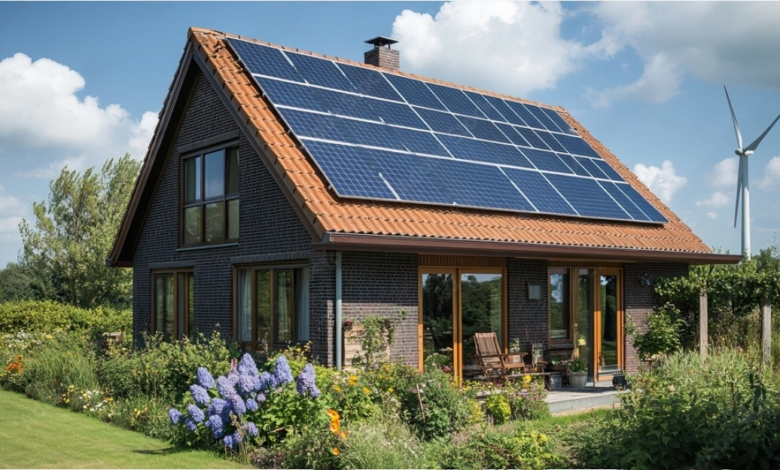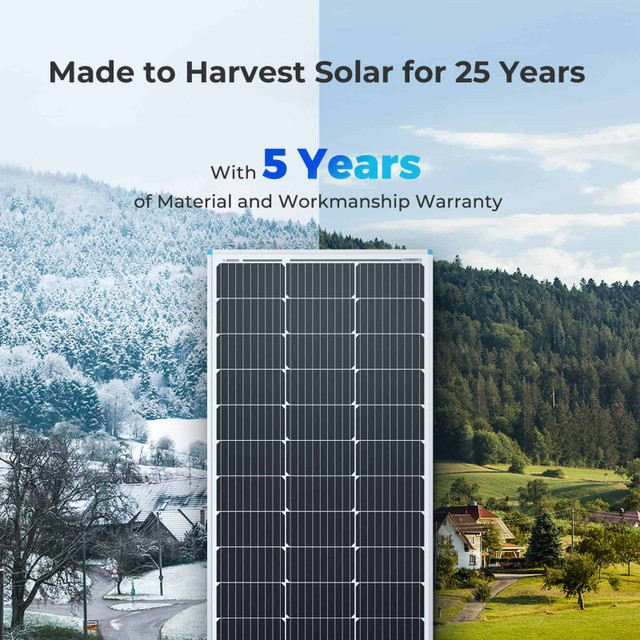How to Live Off the Grid: A Step-by-Step Guide

Living off the grid has become an attractive lifestyle for many people who seek independence, sustainability, and freedom from modern society’s constraints. This way of life isn’t just about disconnecting from utilities; it’s about embracing a self-sufficient, eco-friendly lifestyle that reduces your dependence on external resources. Whether you’re looking to minimize your carbon footprint, save money, or gain more control over your own life, learning how to live off the grid is an empowering journey. This guide will walk you through the process step by step, helping you understand the essentials of off-grid living.
What Does It Mean to Live Off the Grid?
Living off the grid refers to being self-reliant, particularly when it comes to utilities like electricity, water, and sometimes even food. The key is generating your own energy, managing waste, growing food, and creating a sustainable lifestyle independent of public infrastructure. Off-grid living doesn’t mean completely cutting yourself off from society, but it does mean taking responsibility for your own survival and well-being.
See also: Funny Face Coffee Mugs: A Hilarious Way to Start Your Morning
Step 1: Plan Your Off-Grid Vision
The first step is to define why you want to live off the grid and what your lifestyle will look like. Off-grid living is not a one-size-fits-all approach. Some people want to live in remote areas with zero connection to the outside world, while others want to integrate some aspects of off-grid living while maintaining access to modern conveniences.
Questions to ask yourself:
- Do I want to be fully off the grid, or do I still want occasional access to some utilities?
- What level of comfort am I aiming for? Minimalist, or fully equipped?
- How remote do I want to be?
- What climate or location will best support my off-grid lifestyle?
- Taking the time to reflect on these questions will help guide the following steps and ensure you’re setting realistic expectations.
Step 2: Choose the Right Location
The location you choose to live off the grid is critical. It will determine how you source water, how much sun exposure you’ll get for solar power, what kind of building materials are available, and how close you are to any outside assistance if needed.
Factors to consider:
- Climate: A mild climate reduces heating and cooling needs, which is beneficial when you’re relying on solar, wind, or other renewable sources of energy.
- Water Source: Access to fresh water is essential. Make sure your property has access to a natural water source like a river, lake, or well.
- Zoning Laws: Some areas have strict zoning laws that may limit your ability to live off-grid. Research local regulations and make sure you can legally build and maintain an off-grid property.
- Proximity to Resources: Even off-grid living often requires occasional trips to town for supplies. Consider how far you’re willing to travel for basic necessities.
Popular Off-Grid Locations:
- Remote areas in states like Alaska, Montana, and Oregon in the U.S.
- Islands in Canada, Australia, or New Zealand.
- Wilderness regions in Europe or South America.
Step 3: Secure Shelter
Your home is the centerpiece of off-grid living. It needs to be energy-efficient, comfortable, and in harmony with its environment. There are various options for off-grid shelters, depending on your budget, location, and personal preferences.
Building or Buying an Off-Grid Home:
- Tiny Homes: Small, energy-efficient, and cost-effective, tiny homes are a popular choice for those looking to live simply and reduce their environmental impact.
- Cabins: A log cabin or similar structure can offer a rustic, cozy space for those who appreciate traditional, durable construction.
- Earthships: These homes are designed to be sustainable and are built using natural and recycled materials. They often feature built-in renewable energy and water systems.
- Yurts: A yurt is a portable, circular dwelling that is highly energy-efficient and popular for off-grid living in certain climates.
Make sure to design your home with proper insulation, ventilation, and the ability to harness natural energy sources like solar or wind power.
Step 4: Generate Off-Grid Power
One of the most important aspects of living off the grid is generating your own power. You’ll need to consider your energy needs, the renewable resources available in your area, and your budget.
Common Off-Grid Energy Sources:
- Solar Power: Solar panels are one of the most popular and effective ways to generate electricity off the grid. Depending on your location, solar energy can meet most, if not all, of your power needs.
- Wind Power: If your location is windy enough, wind turbines can provide a significant amount of electricity, either as a primary or backup source.
- Hydropower: If your property has access to flowing water, a small hydroelectric system can generate consistent energy year-round.
- Backup Generators: While not renewable, having a backup generator (preferably one that runs on biofuel or propane) can help in emergency situations.
When it comes to solar energy, Renogy is a well-known and trusted brand in the off-grid community. Their solar kits are designed specifically for off-grid living, offering solutions for everything from tiny homes to larger properties. Renogy provides complete solar kits that include solar panels, inverters, batteries, and charge controllers, making it easier to set up your system without piecing together different components. The Renogy Solar Starter Kit, for example, is ideal for beginners and includes everything you need to generate clean, renewable power.
If you’re aiming for a more comprehensive solution, Renogy also offers larger systems with expandable setups. Their high-quality solar panels are designed for durability, which is crucial for off-grid living, especially in remote areas. Plus, Renogy’s support team offers guidance on choosing the right setup based on your energy needs, making them a solid option for those looking to transition to off-grid living with minimal hassle.

Step 5: Water Management
Access to clean water is essential for drinking, cooking, cleaning, and irrigation if you plan to grow your own food. Off-grid water systems need to be reliable and sustainable.
Options for Off-Grid Water Systems:
- Wells: Drilling a well is one of the most common ways to access water when living off-grid. Wells provide a reliable source of groundwater but require power (usually solar) for pumping.
- Rainwater Harvesting: In many areas, collecting rainwater can provide an abundant source of fresh water. Install gutters, downspouts, and large storage tanks to capture and filter rainwater for use.
- Streams or Rivers: If your property has a natural water source, you can use a system of pumps, filters, and pipes to transport water to your home. Ensure you have proper filtration and purification methods to make the water safe for consumption.
Step 6: Waste Management
Managing waste when living off the grid requires a thoughtful and sustainable approach, as you won’t have access to municipal waste services. Composting toilets are a popular option for dealing with human waste, converting it into usable compost for your garden or other applications. These toilets require no plumbing and dramatically reduce your water usage. If you prefer something more conventional, a septic system can handle household wastewater, but it involves more installation work and maintenance.
Recycling greywater — the water from your sinks, showers, and washing machines — is another effective waste management strategy. This water can be filtered and reused for irrigation or other non-potable uses, cutting down on water waste. When it comes to household trash, separating recyclables and composting organic waste can significantly reduce the amount of waste you produce. Composting not only minimizes waste but also enriches your soil, supporting the cycle of sustainability in an off-grid environment.
Step 7: Grow Your Own Food
Food production is a key part of self-sufficiency. Many off-grid homesteaders grow their own food, raise livestock, or a combination of both.
How to Grow Food Off the Grid:
- Gardening: Start with a garden that includes a variety of fruits, vegetables, and herbs. Raised beds, greenhouses, and permaculture principles can increase yield and sustainability.
- Greenhouses: A greenhouse can extend your growing season and provide protection from the elements. This is particularly useful in colder climates.
- Livestock: Raising chickens for eggs, goats for milk, or larger animals like cows or pigs for meat can provide a reliable food source. Make sure to consider the space, water, and time required for livestock care.
- Food Preservation: Learn methods of preserving food like canning, dehydrating, and fermenting to ensure you have enough supplies through the winter or off-season months.
Step 8: Establish Off-Grid Communication
Living off the grid doesn’t necessarily mean being completely disconnected from the outside world. Depending on your location, you may still be able to use a cell phone, especially with the help of signal boosters that enhance weak signals in remote areas. If staying online is important to you, satellite internet services like Starlink offer high-speed internet access in many remote regions.
For emergency situations or communication in very remote areas, two-way radios or CB radios provide reliable means of staying in contact with nearby communities or rescue services.
Step 9: Learn Essential Skills
Living off the grid requires a broad set of skills to handle various aspects of self-sufficient living. The more skills you can develop, the easier and more rewarding your off-grid life will be.
Important Skills to Learn:
- Basic carpentry and building techniques.
- Plumbing and electrical system repairs.
- First aid and medical care.
- Gardening, animal husbandry, and food preservation.
- Hunting, fishing, and foraging for wild food.
- There are plenty of resources online and in books to help you develop these skills, or you can take classes and workshops focused on sustainable living and homesteading.
Conclusion
Living off the grid is a life-changing decision that comes with many challenges and rewards. It requires careful planning, the right location, sustainable power and water systems, waste management, food production, and a variety of practical skills. But for those who seek a more independent, eco-friendly lifestyle, it’s a journey worth taking. Following this step-by-step guide will put you on the path toward off-grid living, allowing you to enjoy a life of freedom, sustainability, and self-reliance.
